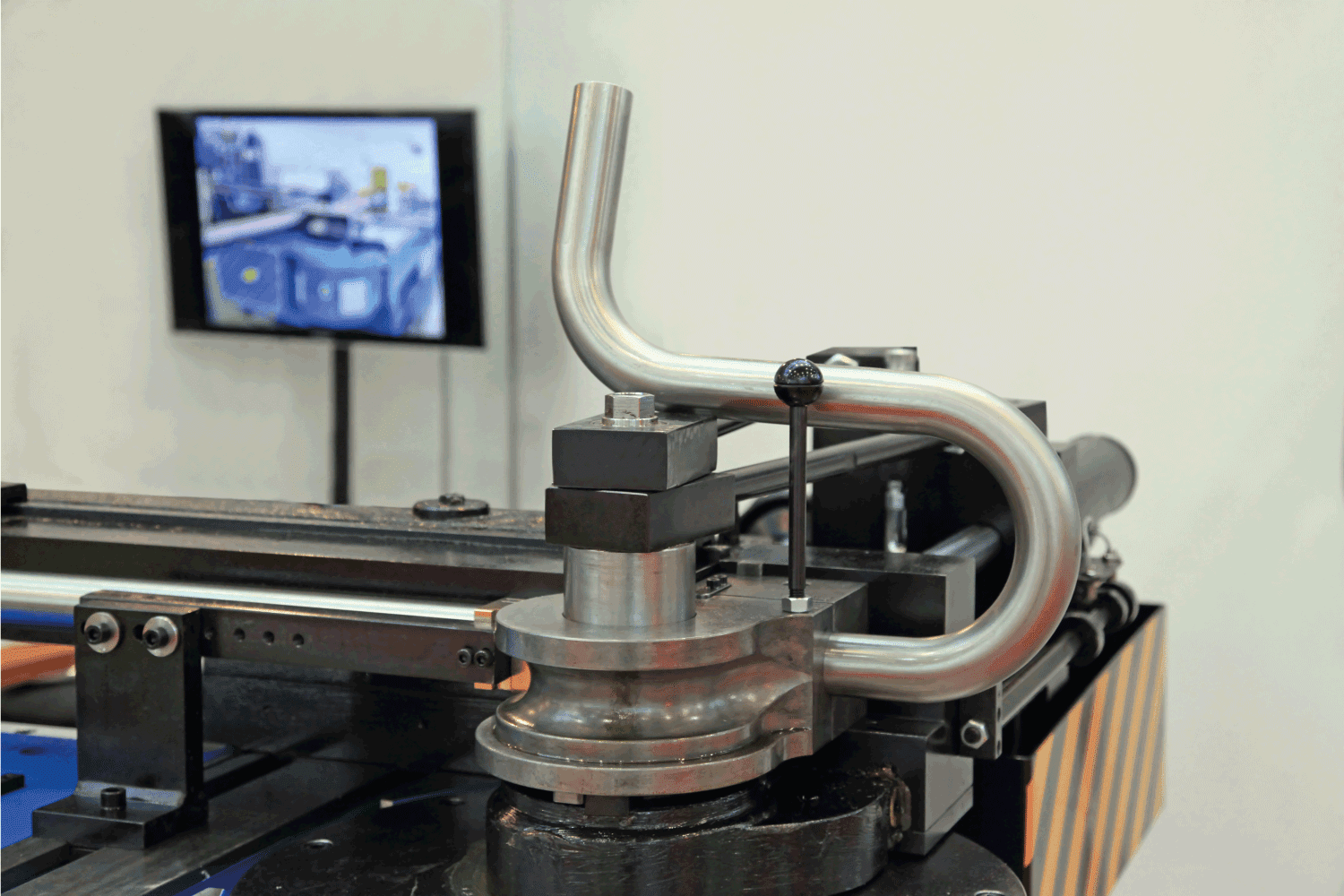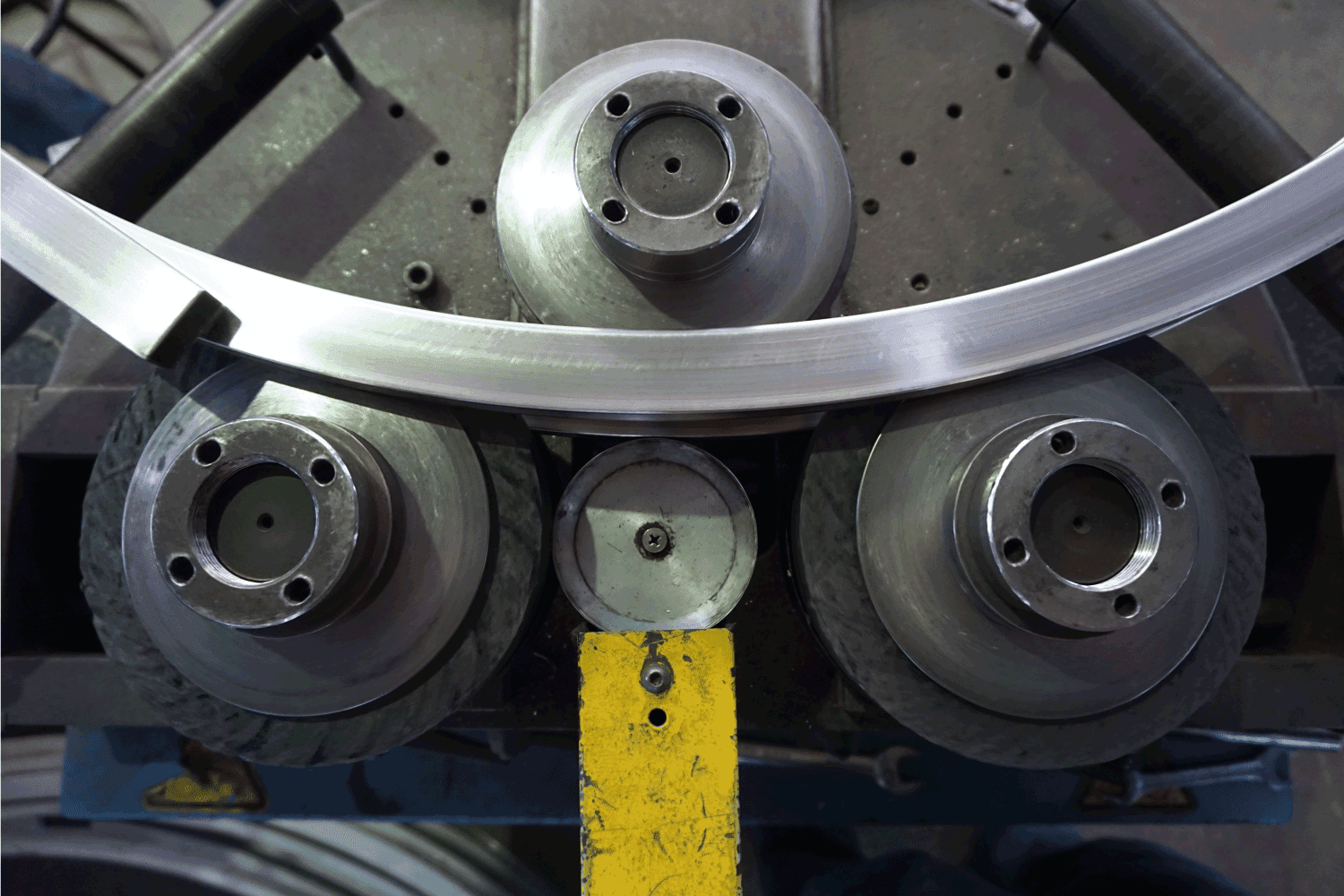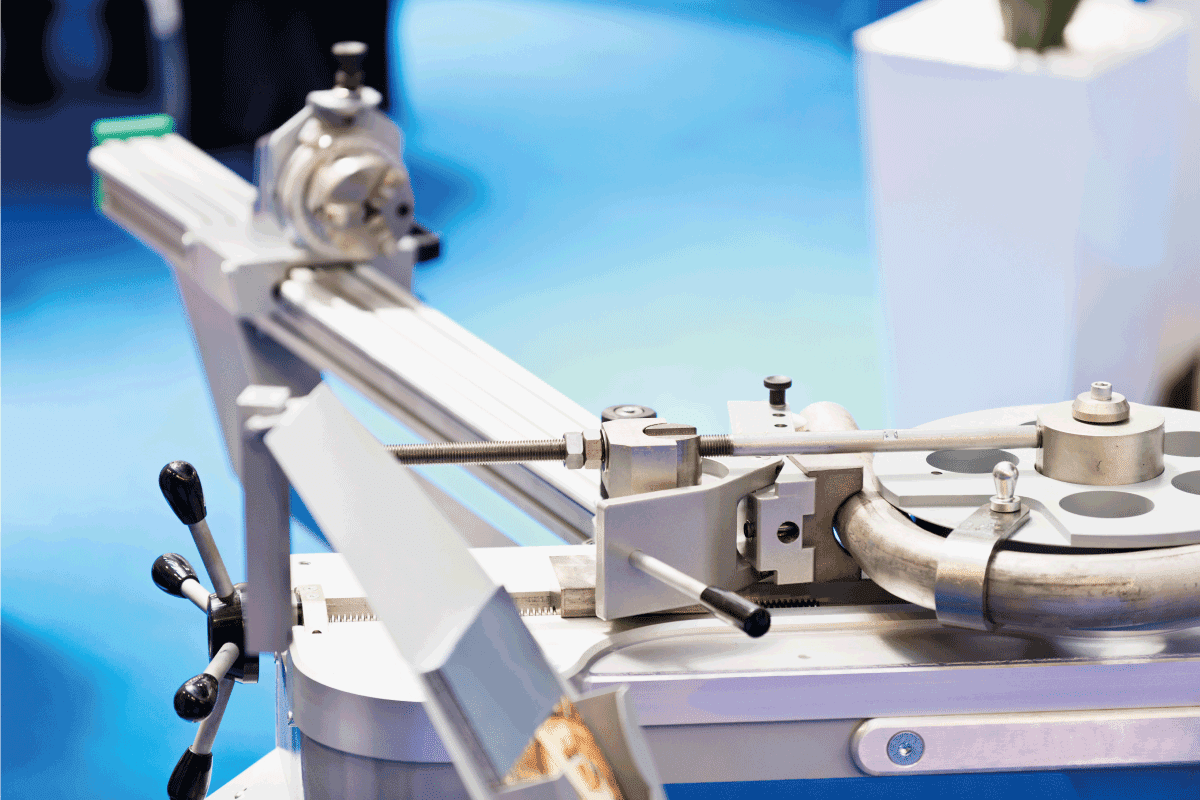The pipes in your home ensure that water, gas, and other materials get to where they need to go. If you want your pipes to work as efficiently as possible, though, you may need to invest in a little modification. That said, how do you bend galvanized pipe? We've researched some of the best ways to transform the piping throughout your home.
If you want to bend a galvanized pipe, it's best to use a pipe bender. Manual benders can help you angle a galvanized pipe by hand. Heavy-duty benders make it easier than ever to transform thicker galvanized pipes. You can also choose to bend your pipes by hand.
There are ways to bend a galvanized pipe without a pipe bender on hand, though. Continue reading to learn more about the pipe bending techniques and tips that can make caring for your home all the simpler.

How to Bend a Galvanized Pipe
The most effective way to bend a galvanized pipe is to use a pipe bender. Both automated and manual pipe benders are designed to give you leverage while working on a pipe. In short, these tools lend you the strength you need to safely create a bend in galvanized steel without hurting yourself or damaging the pipe.
Automatic Pipe Benders Vs. Handheld Pipe Benders
Determining whether to bend your galvanized pipe by hand or with an automatic tool can be tricky. If you don't have either of these tools already on hand, you'll want to be certain that you're making a smart investment.
What's more, you'll want to make sure that you have the appropriate safety gear on hand before putting either tool to use. Which tool, then, should you use?
Automatic
Automatic pipe benders take a lot of the stress out of pipe bending. These benders lend artificial strength to your efforts.
What's more, they can often stop themselves before bending your pipe past your preferred angle. That said, automatic pipes may damage your pipe more readily than handheld ones. Similarly, these benders tend to be a hefty financial investment.
Handheld
Comparatively, handheld pipe benders tend to be less expensive but more difficult to use. You'll need to do a lot of your own math ahead of time if you want your handheld bender to serve you well.
You'll also need to prepare yourself to put a lot of sweat into your DIY piping efforts. That said, using a handheld pipe bender can save you money on tools. These tools can also limit the amount of damage your pipes endure during their initial installation.
See this handheld pipe bender on Amazon.
Alternative Bending Techniques

That said, there's more than one way to bend a galvanized pipe, whether you're using a handheld bender or an automatic one. Some of the most common techniques put to use today include:
Compression Bending
To complete a compression bend, fit the pipe around a die. Once the pipe is secure, you can either bend it by hand, using your knee, or with the help of a pair of pliers. If you try to bend the pipe by hand, be sure to wear gloves.
Ram Bending
Ram bending tends to be an automatic process. Fit your pipe underneath a hydraulic ram and let said ram fall down against it. Note that when using the ram method, it's best to fill your pipe with some sort of supportive material. If you try to ram-bend a pipe that isn't well-supported, you run the risk of kinking or otherwise damaging your line.
Roll Bending

Roll bending looks a lot like pasta making, though using metal instead of flour and eggs. To roll a bend, you can guide your pipe through tube rollers, setting your preferred angle ahead of time. Again, you'll want to fill your pipe prior to this kind of rolling or else risk kinks.
Induction Bending
To induction bend galvanized pipe, you can wrap a heating coil around your pipe. Make sure the coil fits the part of the pipe you wish to bend. As soon as the pipe has effectively softened, you can use your hands or a tool to bend it to your preferred degree.
Hot Bending
Hot bending works similarly to induction bending. Instead of fitting your pipe with an induction coil, though, you can instead heat your preferred bend with a blow torch or similar tool. Once the mental is softened, you can fit it with a clamp to ensure an effective bend.
Does Galvanized Pipe Bend Easily?
Galvanized pipe is protected by a layer of zinc. This layer keeps the pipe from rusting. While the layer may suffer damage over time, it ensures the pipes' longevity, saving you money and keeping your water and gas running for years at a time.
Contrary to popular belief, this layer of zinc doesn't make it more difficult for you to bend a galvanized pipe. Instead, you can cold bend galvanized pipe with the help of a pipe bender and other appropriate power tools.
If your galvanized pipe is on the older side, there is a chance that the zinc coating may crack. In these cases, you may need to replace the bent pipe to ensure its overall longevity.
You can opt to work with the professional plumbers in your area if you don't feel confident operating a pipe bender or if you've had bad experiences with cracked zinc before. An initial consultation may also help you determine which of your potential bending methods may best suit your tools, not to mention the project you have in mind.
How Do You Bend Tubing Accurately?
You can bend home tubing using the same methods you would to bend piping. Specifically, you can ram, roll, compress, and rotary draw tubing. All of these methods, when used appropriately, will ensure that your tubing can adequately fit into your preferred set-up.
See this handheld tube bender on Amazon.
How Do You Bend a Pipe Without a Bender?
There are a few different ways to successfully bend a pipe without a bending tool. What method you use will depend on the size of your galvanized pipe and the degree to which you want the pipe bent.
First and foremost, cap and fill your pipe with sand or dirt. These materials will prevent kinks and other kinds of pipe damage during the bending process. Once you have your pipe full of compact material, locate a sturdy object around your home. You'll want this object to be broader than your pipe.
Once you've located your object of choice, slip your pipe around it. Then, while wearing gloves, use your body weight and strength to bend the pipe to your preferred angle. The filling, as mentioned above, will keep the pipe from cracking or kinking.
How Do You Bend a Pipe Without Kinking It?
If you're concerned about the structural integrity of your pipe, you can take steps to prevent it from kinking. The best way to limit pipe damage is to fill your pipe with sand prior to its bending. When you fill a pipe with compact sand, you force the pipe to better hold its shape.
Note that you'll want to use duct tape or some other kind of cap to keep the sand from spilling out through your pipe. Once you've got your pipe at your preferred angle, you can remove your cap and the compacted sand before the rest of your installation.
How Do You Find The Degree of a Bend?
The easiest way to determine the angle of a bent pipe is to reach for your pipe bender. You won't be re-bending the pipe in question. Rather, pipe benders often come equipped with a protractor.
If you fit your bender to the angle of your pipe, you'll have an idea of what degree the pipe is bent at. Alternatively, you can purchase a handheld protractor and fit it to the angle in question.
If you're not sure what angle your pipe needs to be bent at, or you want to double-check your measurements, call on area professionals. Plumbers near you can help you determine the angle of all of the pipes throughout your home. They can even give you an idea of what angle you may need to bend new pipes, should you want to install new pieces.

Making Galvanized Pipes Suit Your Home
The layer of zinc on the outside of galvanized pipes ensure that they resist rust and other forms of damage for a long time. That additional strength can make galvanized pipes more difficult to bend than other types of pipes, though. With that in mind, you'll need the right kind of tools on hand if you want to modify any of your to-be-installed pipes.
Both manual and powered pipe benders can help you safely bend your pipes to your preferred angle. That said, professional plumbers can also help you better fit your pipes to your home. Even if you do want to install your pipes on your own, an initial consultation with area professionals can make the process a little simpler.


